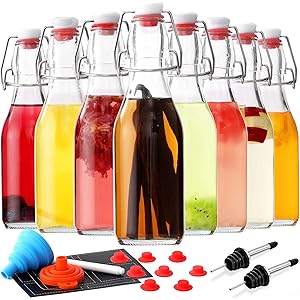Understanding Yeast Blooming
Yeast blooming is a critical process in baking and brewing, indicating that the yeast is active and ready to ferment. When you ask, “how do you know yeast has bloomed?”, you are essentially inquiring about the signs that confirm yeast activation. The blooming process typically involves the yeast consuming sugars and producing carbon dioxide and alcohol, which are essential for the leavening of bread and the fermentation of beverages.
Visual Signs of Yeast Blooming
One of the most apparent indicators of yeast blooming is the formation of bubbles or foam on the surface of the mixture. When you mix yeast with warm water and sugar, you should observe a frothy layer developing within a few minutes. This bubbling action signifies that the yeast is consuming the sugars and producing carbon dioxide gas. If you see this reaction, you can confidently conclude that your yeast has bloomed effectively.
Time Frame for Yeast Activation
Typically, yeast will begin to bloom within 5 to 10 minutes after being mixed with warm water and sugar. If you are wondering how do you know yeast has bloomed, timing is crucial. If there is no visible bubbling or foam after this period, it may indicate that the yeast is either inactive or dead. Always check the expiration date on your yeast package to ensure it is still viable.
Temperature’s Role in Yeast Activation
The temperature of the water used to activate the yeast plays a significant role in the blooming process. Ideally, the water should be between 100°F to 110°F (37°C to 43°C). If the water is too hot, it can kill the yeast, while water that is too cold may not activate it at all. Therefore, when you ask how do you know yeast has bloomed, remember that the right temperature is essential for successful activation.
Smell as an Indicator of Yeast Activity
Another way to determine if yeast has bloomed is by the smell. Activated yeast produces a distinct, slightly sweet aroma due to the fermentation process. If you notice this pleasant scent, it is a good sign that your yeast is alive and has begun to bloom. Conversely, if there is no smell or an off-putting odor, it may indicate that the yeast is not functioning properly.
Get more content like this!
Sign up to receive updates and new terms first hand.
Using Sugar to Encourage Yeast Blooming
Adding a small amount of sugar to the warm water before introducing the yeast can significantly enhance the blooming process. Sugar acts as food for the yeast, promoting rapid fermentation and bubbling. When you are curious about how do you know yeast has bloomed, consider the amount of sugar you’ve added, as it can directly affect the yeast’s activity level.
Testing Yeast with Water and Flour
For those who want to ensure their yeast is active before using it in a recipe, a simple test can be performed. Mix equal parts of flour and water with the yeast and observe the mixture. If it begins to rise and bubble within a short period, you can be assured that the yeast has bloomed. This method is particularly useful for bakers who want to avoid wasting ingredients on inactive yeast.
Common Mistakes to Avoid
When trying to determine how do you know yeast has bloomed, it’s essential to avoid common pitfalls. One mistake is using cold water, which can prevent the yeast from activating. Another error is not allowing enough time for the yeast to bloom. Always give it at least 10 minutes before concluding that it hasn’t worked. Additionally, ensure that your yeast is stored correctly to maintain its potency.
Understanding Different Types of Yeast
Different types of yeast, such as active dry yeast, instant yeast, and fresh yeast, may have varying blooming characteristics. Active dry yeast requires rehydration in warm water, while instant yeast can be mixed directly with dry ingredients. Knowing the type of yeast you are using can help you better understand how do you know yeast has bloomed and what signs to look for during the activation process.
Final Thoughts on Yeast Blooming
Recognizing the signs of yeast blooming is crucial for successful baking and brewing. By observing visual cues, timing, temperature, and smell, you can confidently determine whether your yeast is active. Understanding these factors will enhance your culinary skills and ensure that your baked goods rise perfectly or your brews ferment successfully.




